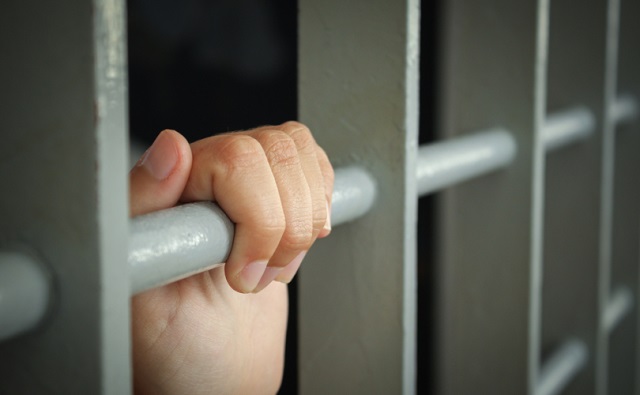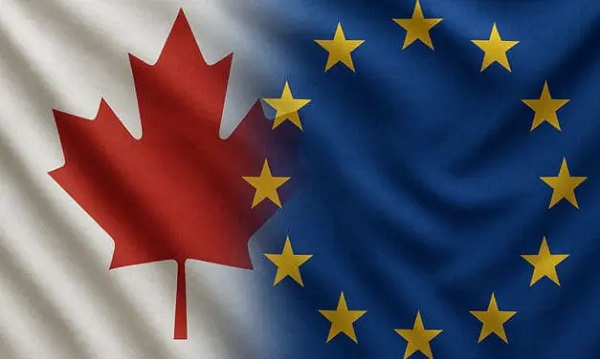Opinion
‘Transgender’ inmates are continuing to sexually assault female prisoners

From LifeSiteNews
By Jonathon Van Maren
The Mail reported that the California prison system has 1,997 detainees who currently identify as transgender and non-binary, and 345 male prisoners have requested transfers to women’s prisons.
Sixty-six-year-old Dana Sue Gray does not cut a sympathetic figure. She is currently serving a life sentence in Central California’s Women’s Facility (CCWF) – a women’s prison – for murdering and then robbing three of her elderly neighbours in the 1990s and going on a shopping spree. Recently, however, she has reportedly been sexually assaulted in jail – by a trans-identifying man serving his sentence with the women.
According to a report by the Daily Mail, Gray reports that she began sharing a dormitory with the trans-identifying male convict early in 2023, and that initially relations were “real friendly.” That soon changed as he became first verbally abusive, and then sexually abusive. One night, the man launched an all-out assault. “He came into my bed area and pulled his pants down and shoved his d***k in my face,” Gray told the Independent Women’s Forum.
Gray described the experience as “terrifying and disgusting” and told the man to back off. The first assault, she says, was merely a “show of male dominance.” He reappeared the following night, and this time he “put that big man hand on my back, on my shoulder blade” while she was sleeping. She woke up panicking and told him: “Stay the F out of my area. Don’t ever come to my area. Don’t ever touch me.” She told a guard, and the man was moved to a different yard – but still in the women’s prison. She did not file a formal complaint alleging assault for fear that she would have been isolated.
Gray is not the only female inmate to be assaulted of late. California has sent trans-identifying men to female prisons since 2020, when Senate Bill 123 was signed into law by Governor Gavin Newsom. Men can be sent to female prisons merely by claiming to be a woman – so-called “self-identification” – and do not have to have any sex change procedures or hormone treatments prior to being transferred. According to both Gray and other prisoners, the arrival of males in female prisons has transformed them.
“It’s disgusting and I have to be polite and deal with it for my own safety, and so that I have a less stressful day, but I don’t like it,” she said. “I don’t want any of them here. I want them to go away. It degrades women so bad.” Many of the women, she added, are poorly educated and particularly vulnerable. The Mail reported that the California prison system has 1,997 detainees who currently identify as transgender and non-binary, and 345 male prisoners have requested transfers to women’s prisons. Thus far, “46 were approved, 64 were denied, and 87 inmates have changed their minds.”
The California Department of Corrections insists that all requests are carefully reviewed, and that transfers are only approved when it is “safe to do so.” This is obviously not the case. Stories of women being sexually assaulted by trans-identifying men behind bars have come out everywhere the practice has been implemented, including Canada, the U.K., and the U.S. Fifty-one-year-old Tremaine Carroll, a trans-identifying man, has been charged with raping two women after being moved to the Central California’s Women’s Facility. He is six foot two, and one of his victims was a slight female in her thirties. He raped her in the shower of their shared dormitory. She is still suffering enormous trauma as a result.
There are plenty of other recent examples, as well. A murderer in Spain serving a 30-year prison sentence for murdering his female neighbor is now identifying as female – and getting transferred to a women’s prison. Other criminals are getting in on the grift, too, hoping it might result in cushier sentences: a violent serial rapist in Scotland has just announced his in-prison transition and demanded “gender affirming” care; an American pedophile convicted of raping his 7-year-old stepdaughter is appealing his life sentence after announcing he is now transgender; last month, a U.K. pedophile was sentenced to a mere 16 months prison, and claims to identify as a 5-year-old girl.
The sexual assault of Dana Sue Gray is just one example of a phenomenon unfolding everywhere the transgender movement has implemented its agenda. She richly deserves the life sentence she received, and she deserves to spend the rest of her life in prison. But to be locked up with a violent man who wishes to rape her is something different. I believe the best way to describe it would be “cruel and unusual punishment.”
Alberta
Alberta’s grand bargain with Canada includes a new pipeline to Prince Rupert

From Resource Now
Alberta renews call for West Coast oil pipeline amid shifting federal, geopolitical dynamics.
Just six months ago, talk of resurrecting some version of the Northern Gateway pipeline would have been unthinkable. But with the election of Donald Trump in the U.S. and Mark Carney in Canada, it’s now thinkable.
In fact, Alberta Premier Danielle Smith seems to be making Northern Gateway 2.0 a top priority and a condition for Alberta staying within the Canadian confederation and supporting Mark Carney’s vision of making Canada an Energy superpower. Thanks to Donald Trump threatening Canadian sovereignty and its economy, there has been a noticeable zeitgeist shift in Canada. There is growing support for the idea of leveraging Canada’s natural resources and diversifying export markets to make it less vulnerable to an unpredictable southern neighbour.
“I think the world has changed dramatically since Donald Trump got elected in November,” Smith said at a keynote address Wednesday at the Global Energy Show Canada in Calgary. “I think that’s changed the national conversation.” Smith said she has been encouraged by the tack Carney has taken since being elected Prime Minister, and hopes to see real action from Ottawa in the coming months to address what Smith said is serious encumbrances to Alberta’s oil sector, including Bill C-69, an oil and gas emissions cap and a West Coast tanker oil ban. “I’m going to give him some time to work with us and I’m going to be optimistic,” Smith said. Removing the West Coast moratorium on oil tankers would be the first step needed to building a new oil pipeline line from Alberta to Prince Rupert. “We cannot build a pipeline to the west coast if there is a tanker ban,” Smith said. The next step would be getting First Nations on board. “Indigenous peoples have been shut out of the energy economy for generations, and we are now putting them at the heart of it,” Smith said.
Alberta currently produces about 4.3 million barrels of oil per day. Had the Northern Gateway, Keystone XL and Energy East pipelines been built, Alberta could now be producing and exporting an additional 2.5 million barrels of oil per day. The original Northern Gateway Pipeline — killed outright by the Justin Trudeau government — would have terminated in Kitimat. Smith is now talking about a pipeline that would terminate in Prince Rupert. This may obviate some of the concerns that Kitimat posed with oil tankers negotiating Douglas Channel, and their potential impacts on the marine environment.
One of the biggest hurdles to a pipeline to Prince Rupert may be B.C. Premier David Eby. The B.C. NDP government has a history of opposing oil pipelines with tooth and nail. Asked in a fireside chat by Peter Mansbridge how she would get around the B.C. problem, Smith confidently said: “I’ll convince David Eby.”
“I’m sensitive to the issues that were raised before,” she added. One of those concerns was emissions. But the Alberta government and oil industry has struck a grand bargain with Ottawa: pipelines for emissions abatement through carbon capture and storage.
The industry and government propose multi-billion investments in CCUS. The Pathways Alliance project alone represents an investment of $10 to $20 billion. Smith noted that there is no economic value in pumping CO2 underground. It only becomes economically viable if the tradeoff is greater production and export capacity for Alberta oil. “If you couple it with a million-barrel-per-day pipeline, well that allows you $20 billion worth of revenue year after year,” she said. “All of a sudden a $20 billion cost to have to decarbonize, it looks a lot more attractive when you have a new source of revenue.” When asked about the Prince Rupert pipeline proposal, Eby has responded that there is currently no proponent, and that it is therefore a bridge to cross when there is actually a proposal. “I think what I’ve heard Premier Eby say is that there is no project and no proponent,” Smith said. “Well, that’s my job. There will be soon. “We’re working very hard on being able to get industry players to realize this time may be different.” “We’re working on getting a proponent and route.”
At a number of sessions during the conference, Mansbridge has repeatedly asked speakers about the Alberta secession movement, and whether it might scare off investment capital. Alberta has been using the threat of secession as a threat if Ottawa does not address some of the province’s long-standing grievances. Smith said she hopes Carney takes it seriously. “I hope the prime minister doesn’t want to test it,” Smith said during a scrum with reporters. “I take it seriously. I have never seen separatist sentiment be as high as it is now. “I’ve also seen it dissipate when Ottawa addresses the concerns Alberta has.” She added that, if Carney wants a true nation-building project to fast-track, she can’t think of a better one than a new West Coast pipeline. “I can’t imagine that there will be another project on the national list that will generate as much revenue, as much GDP, as many high paying jobs as a bitumen pipeline to the coast.”
Business
Carney’s European pivot could quietly reshape Canada’s sovereignty

This article supplied by Troy Media.
Canadians must consider how closer EU ties could erode national control and economic sovereignty
As Prime Minister Mark Carney attempts to deepen Canada’s relationship with the European Union and other supranational institutions, Canadians should be asking a hard question: how much of our national independence are we prepared to give away? If you want a glimpse of what happens when a country loses control over its currency, trade and democratic accountability, you need only look to Bulgaria.
On June 8, 2025, thousands of Bulgarians took to the streets in front of the country’s National Bank. Their message was clear: they want to keep the lev and stop the forced adoption of the euro, scheduled for Jan. 1, 2026.
Bulgaria, a southeastern European country and EU member since 2007, is preparing to join the eurozone—a bloc of 20 countries that share the euro as a common currency. The move would bind Bulgaria to the economic decisions of the European Central Bank, replacing its national currency with one managed from Brussels and Frankfurt.
The protest movement is a vivid example of the tensions that arise when national identity collides with centralized policy-making. It was organized by Vazrazdane, a nationalist, eurosceptic political party that has gained support by opposing what it sees as the erosion of Bulgarian sovereignty through European integration. Similar demonstrations took place in cities across the country.
At the heart of the unrest is a call for democratic accountability. Vazrazdane leader Konstantin Kostadinov appealed directly to EU leaders, arguing that Bulgarians should not be forced into the eurozone without a public vote. He noted that in Italy, referendums on the euro were allowed with support from less than one per cent of citizens, while in Bulgaria, more than 10 per cent calling for a referendum have been ignored.
Protesters warned that abandoning the lev without a public vote would amount to a betrayal of democracy. “If there is no lev, there is no Bulgaria,” some chanted. For them, the lev is not just a currency: it is a symbol of national independence.
Their fears are not unfounded. Across the eurozone, several countries have experienced higher prices and reduced purchasing power after adopting the euro. The loss of domestic control over monetary policy has led to economic decisions being dictated from afar. Inflation, declining living standards and external dependency are real concerns.
Canada is not Bulgaria. But it is not immune to the same dynamics. Through trade agreements, regulatory convergence and global commitments, Canada has already surrendered meaningful control over its economy and borders. Canadians rarely debate these trade-offs publicly, and almost never vote on them directly.
Carney, a former central banker with deep ties to global finance, has made clear his intention to align more closely with the European Union on economic and security matters. While partnership is not inherently wrong, it must come with strong democratic oversight. Canadians should not allow fundamental shifts in sovereignty to be handed off quietly to international bodies or technocratic elites.
What’s happening in Bulgaria is not just about the euro—it’s about a people demanding the right to chart their own course. Canadians should take note. Sovereignty is not lost in one dramatic act. It erodes incrementally: through treaties we don’t read, agreements we don’t question, and decisions made without our consent.
If democracy and national control still matter to Canadians, they would do well to pay attention.
Isidoros Karderinis was born in Athens, Greece. He is a journalist, foreign press correspondent, economist, novelist and poet. He is accredited by the Greek Ministry of Foreign Affairs as a foreign press correspondent and has built a distinguished career in journalism and literature.
Troy Media empowers Canadian community news outlets by providing independent, insightful analysis and commentary. Our mission is to support local media in helping Canadians stay informed and engaged by delivering reliable content that strengthens community connections and deepens understanding across the country.
-

 Crime1 day ago
Crime1 day agoHow Chinese State-Linked Networks Replaced the Medellín Model with Global Logistics and Political Protection
-

 Aristotle Foundation2 days ago
Aristotle Foundation2 days agoWe need an immigration policy that will serve all Canadians
-

 Addictions2 days ago
Addictions2 days agoNew RCMP program steering opioid addicted towards treatment and recovery
-

 Business1 day ago
Business1 day agoNatural gas pipeline ownership spreads across 36 First Nations in B.C.
-

 Business15 hours ago
Business15 hours agoEU investigates major pornographic site over failure to protect children
-

 Health1 day ago
Health1 day agoRFK Jr. purges CDC vaccine panel, citing decades of ‘skewed science’
-

 Courageous Discourse1 day ago
Courageous Discourse1 day agoHealthcare Blockbuster – RFK Jr removes all 17 members of CDC Vaccine Advisory Panel!
-

 Immigration1 day ago
Immigration1 day agoMass immigration can cause enormous shifts in local culture, national identity, and community cohesion



